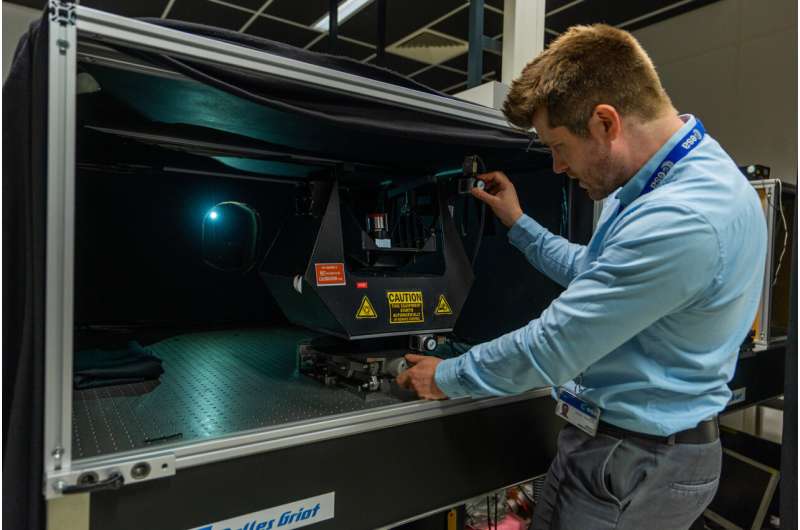This article has been reviewed according to Science X's editorial process and policies. Editors have highlighted the following attributes while ensuring the content's credibility:
fact-checked
trusted source
proofread
An artificial star for testing the optical performance of startrackers

Like mariners of old, spacecraft steer by the stars—using combinations of telescopes, cameras and computers called startrackers to recognize stellar constellations to calculate their own position in space.
The test bench seen here generates an artificial star-like light source to test the optical performance of startrackers.
Part of the Guidance and Navigation Control (GNC) Attitude and Orbit Control (AOCS), and Pointing Laboratory, based at ESA's ESTEC technical center in the Netherlands, this test bench combines a two-axis precise rotating table with a single star simulator—simulating the light coming from infinity from a star of a given brightness and color.
Produced in house by the lab team, the purpose of this facility is to characterize or calibrate a startracker in terms of distortion, chromatic aberration and other optical variables.
The GNC, AOCS and Pointing Lab works on manner of technologies related to a spacecraft's ability to derive its orientation and location in space. It is one of a suite of ESA technical labs addressing all aspects of spaceflight.
Provided by European Space Agency





















